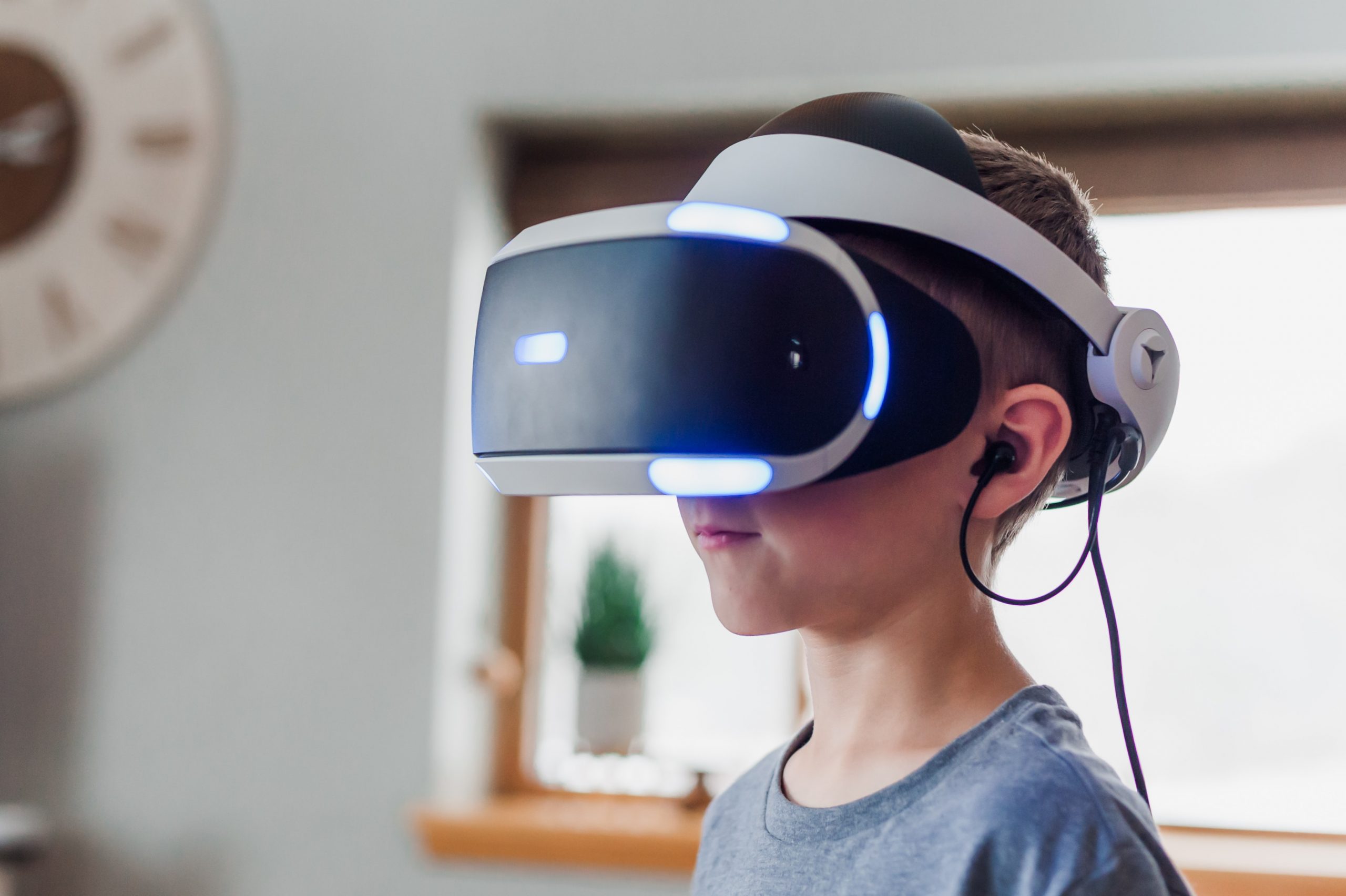
Immersive reality, also known as Extended Reality (XR) refers to all real and virtual environments generated by computer graphics and wearables. The ‘X’ in XR is a variable that can stand for any letter. XR is the umbrella category that covers all the various forms of computer-altered reality, including Virtual Reality (VR), Augmented Reality (AR), and Mixed Reality (MR).
Virtual Reality (VR)
VR immerses the user in a virtual world through a head-mounted display (HMD). Some example of VR headsets include Oculus Rift (Facebook’s VR headset), Vive (HTC’s product), PlayStation VR, and Daydream (Google’s VR headset). The video below provides a helpful breakdown of the best VR headsets for 2021. While this is a hardware-focused video, it gives a great impression of what VR actually is and what it looks like in practice.
Augmented Reality (AR)
AR overlays digital information onto the physical (real) world of the user through a mobile application or a social network app (currently, many filters AR are been used on Facebook, Instagram, and Snapchat). The video below discusses the fundamentals of AR as well as how to design custom AR apps and content.
Mixed Reality (MR)
MR is a hybrid reality which merges the real and virtual worlds. In this space, physical and digital objects co-exist and interact. MR requires a headset; some of examples of MR headsets include Microsoft HoloLens and Magic Leap (backed by Google). The video below outlines the basic definition of MR and gives a bit of sneak preview into some of the applications that will be discussed later in this educational resource.
Opportunity Statement
People learn through experience. Until recent history, our experiences were limited by space, time, and resources. But now, thanks to the rapid development of extended reality technologies, i.e. VR, AR, and MR, these borders and limitations are no more. We can virtually send students to the moon for exploration or teach them how to weld an underwater pipeline with zero danger.
Extended reality has been on the public radar for quite some time (remember Virtual Boy?), however, only now are multiple industries beginning to pay close attention and invest. The technology has finally reached a point of consumer affordability where the average person, or business, can access the technology. As this technology becomes more mainstream, it is being adopted by numerous industries, such as healthcare, athletics, design, and many others.
Of all the industries that could be positively impacted by extended reality, education seems like it has the most to gain. Education has made great strides with the mainstream adoption of online learning in recent years; now it is time to take the next step.
Resources
Immersive experience is an exciting space to explore and there has been many student-created projects previously created that have explored Virtual field trips and other immersive experiences.
Here is a more recent exploration on this topic developed on Spring 2022 which focus on the Hands-on Learning through Immersive Experiences.
Other Resources
XR: VR, AR, MR—What’s the Difference?
Everybody Into the Metaverse! Virtual Reality Beckons Big Tech.
Virtual, augmented and mixed reality in K–12 education: a review of the literature
